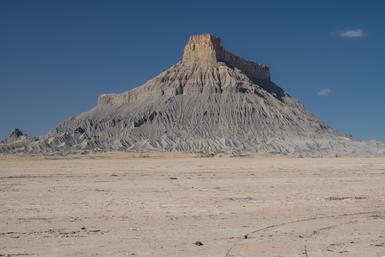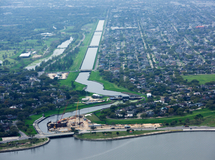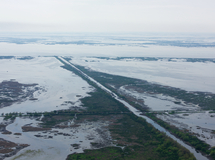Mistakes I've Made
Mistakes I've made. In photography, too many to list. Some big, some small. From underexposing, overdeveloping, losing negatives, losing files, making unintentionally blurry images from a plane at 1000 feet up, and so on.
I will share one big one: a trip to the Bahamas in the 80s for a spring break vacation with family, my daughter Maru about 2 years old. Being who I am I brought a 4 x 5 camera and 100 sheets of Kodak Plus-X film. I managed to get away several times and shot most of the whole box, changing out exposed sheets of film each night in a dark closet with fresh sheets so as to be ready to shoot the next day. Back home in my darkroom, I set up to process the film, got my trays ready for development, turned off the lights, and ran my film from the developer to stop to fix and to rinse and then turned on the lights to see how these first sheets looked. As I did this I looked over to my right to see the remaining stack of sheets of exposed but undeveloped film sitting there on the counter underneath the enlarger. About 85 sheets of film: not back in their light-tight box, not protected from the light at all. All now blown.
That was a mistake made once and never again.
Of course, there are other categories of mistakes made over a long career: teaching mistakes, political and strategic mistakes, creative mistakes, exhibition mistakes, and a whole other category I won't go into here: personal mistakes.
For instance, very early in my career, I had a print accepted to a group show at MIT where Minor White ran the program. My image was accepted for exhibition by this great master. I felt honored that my image had passed before his eyes. The evening of the opening I arrived and started looking for my photograph only to find it prominently displayed, upside down!
One of the things all of us who are career artists do is promote a relationship with influential people. This means developing an association with curators, gallery directors, editors, art buyers, and, if working professionally, art directors. For me, this has meant repeatedly showing work often over years to museum curators. Twice, in a big way, this has affected my career when a curator up and left after seeing my work over an extended period. One went from being a photo curator to the head of the museum while seeing my work once a year for several years. Then having said to me she was giving me a one-man show told me she was leaving to go into banking. All right. In working with her replacement I had a new just-out-of-grad-school curator. I had someone assigned to show my work who had no understanding of it and no history of looking at my work over a period of years. The show was less powerful and persuasive because of this.
One more: in making aerial photographs of the Cape and Martha's Vineyard one fall day I flew out of the Hyannis Airport in October at about 3 pm. The quantity of light in aerial work is paramount as you must work with a fast shutter speed combined with at least some depth of field. As it got later, I was losing light, raising my ISO and lowering my shutter speed. Most of the files I shot that day were blurry. I try to make aerial photographs now in the morning when the light is increasing.
I have always found photography challenging, part of its appeal. There are so very many ways you can screw up. I would often tell students it wasn't the mistakes so much, it was the failure to learn from them that was tragic. There is something so inevitable and final in an image swooping onto your film or sensor. At some fast shutter opening of, say, 1/500 of a second, the image is fully formed, fixed as in stone. What are your chances that this is great? Very low.
Let me finish with this: what is your intention with your work? And in that process are you specific and disciplined, methodically planning and calculating each step to achieve your goal? Or are you impulsive, working sporadically, haphazardly accruing disparate images over time? I suspect that most of us are a little of both, at times being careful and calculated and at others just picking up our camera and winging it. I would presume one goal would be to make fewer mistakes, and waste our limited time less. Perhaps some planning and forethought isn't such a bad thing?
Being fluent and practiced is key, of course. The same camera, a known lens so that you can sublimate the gear and work without logistics and circumstances getting in your way. After all, you're trying to be clear-headed and perceptive. Make it as easy on yourself as you can by knowing what you're doing. Being a professional or a career photographer is a very different thing than being an amateur who picks up a camera only occasionally. Photography's hard, as you've read from me before. Figure out ways to make it work better for the materials and situations you find yourself in. Really good photography is made by people who have discipline and understand that this is work. Rewarding work and work that can be really fun, but work nevertheless.



